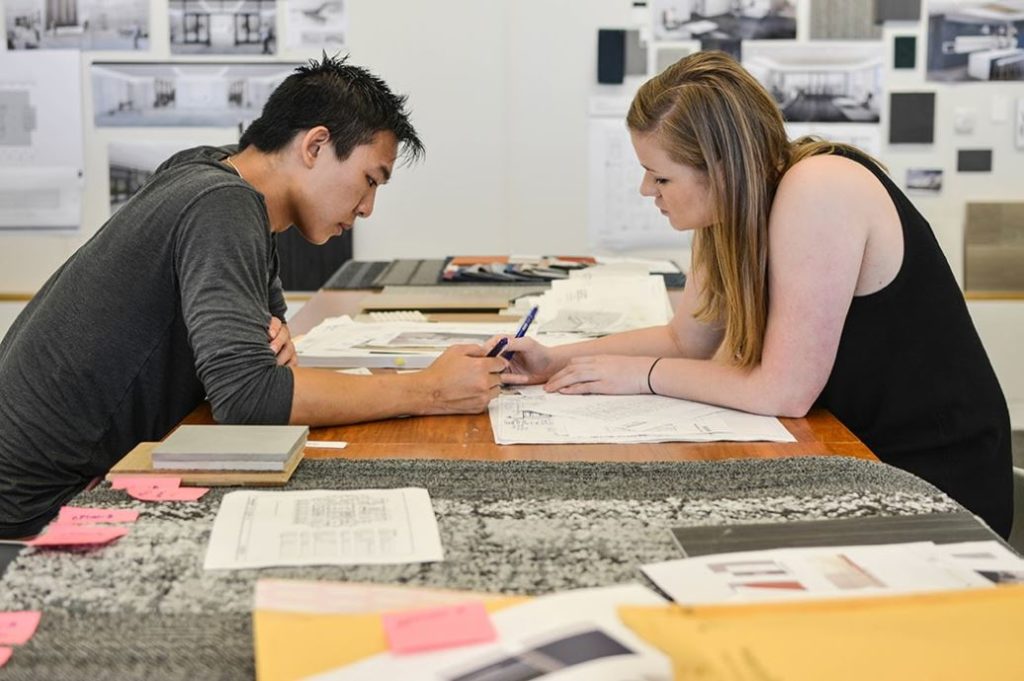We Keep the Public Safe
On Friday, November 21, 1980, the MGM Grand Hotel, one of the centerpieces of the Las Vegas Strip, had a fire that started small but quickly spread through the property, with devastating effects. The fire killed 85 people, and in the weeks that followed, it would force a wholesale re-evaluation in high-rise building code. Its greatest legacy, however, may be the way it forever changed our understanding of Commercial Interior Design.

The MGM Grand fire remains the deadliest disaster in Nevada history and the third-deadliest hotel fire in modern U.S. history. The fire, itself, however, wasn’t what killed the victims. The burning decorative materials, instead, created toxic fumes and smoke which ascended throughout the hotel tower. Those interior materials also contributed to the speed with which the fire overtook the building. Combustible furnishing and interior finishes, foam padding, and moldings allowed for an extremely rapid fire spread and heavy smoke production.
The end result was that dozens of people were trapped or overcome before they had any chance to escape.
This tragedy has led to many changes in building codes, material uses, and studies on the toxicity of building materials and their impact on the environment and the health and safety of occupants. The MGM fire, as much as any modern incident, reminds us of the importance of designing buildings that keep people safe.
In short, the MGM fire defined the need for skilled, expert Commercial Interior Designers—a professional designation that had never existed before, but which, in the 40 years since, has only grown in importance. Today, commercial interior designers play a large role in the health and safety of the occupants of every public and commercial building.
Designing for commercial spaces means designing for the public at large. We are not just designing for ourselves (our aesthetic, our preferences). The health and safety of all those who enter and use these spaces has always been paramount, even prior to the COVID-19 pandemic.
Today architects design much safer buildings than in the days of the MGM fire, but interior designers have not historically been required to meet similar standards of education, experience and oversight. In fact, even 40 years later, Commercial Interior Designers are still struggling to be recognized legally as “design professionals.” Following the MGM fire, Nevada and Florida began to regulate Commercial Interior Designers, registering them as “Licensed Design Professionals”. Here in California, interior designers are not legally recognized as “design professionals.”
So how do we elevate our profession to illustrate the value of our extensive knowledge of health and safety standards in design? We start with a good foundation of education and relevant experience. Our profession also seeks to establish legal recognition through testing, certification or registration, and continuing education to maintain certification throughout one’s career. Currently across the country, the requirements for legal recognition and oversight vary greatly from state to state.
The most common testing for the profession is the NCIDQ (National Council of Interior Design Qualifications) exam administered by the Council of Interior Design Qualifications, which is recognized among professionals as by far the most authoritative, rigorous, and reliable. Here in California, the state instead relies on the IDEX (Interior Design Exam) created and administered by the California Council for Interior Design Certification.
The IDEX does include topics which are specific to California code, which the standard NCIDQ does not. However, many of California’s Commercial Interior Designers elect to take the NCIDQ, anyway, in order to establish their credentials within the industry and to demonstrate their adherence to this higher standard of understanding of commercial interior design principles, expertise, and best practices.
One of the biggest differences between the exam systems is in their approaches to updates — an important consideration in an industry that is constantly changing due to new technologies, new products on the market, and new trends that could easily run afoul of safety standards if followed blindly. To ensure the NCIDQ maintains its rigor, CIDQ regularly gathers a small group of professional interior designers from around the country to discuss the profession in detail and focus on the real world practice of interior design. This practice analysis, unlike anything in the IDEX system, examines how the profession has evolved and what new elements or significant trends need more focus in upcoming exams. As a previous participant in these sessions, I’m inspired by how this process ensures the NCIDQ exam provides up-to-date value to the profession — and therefore the public.
Commercial Interior Designers seek to learn from the past and prepare better for the future. We focus on design and the health and safety of those we are designing for. Our profession was born from disaster, and we look to protect against future incidents by arming ourselves with the best education, deepest expertise, and most up-to-date and consistent standards we can establish.

Bill Weeman, IIDA, NCIDQ, CID
Associate Principal at AECOM in San Francisco